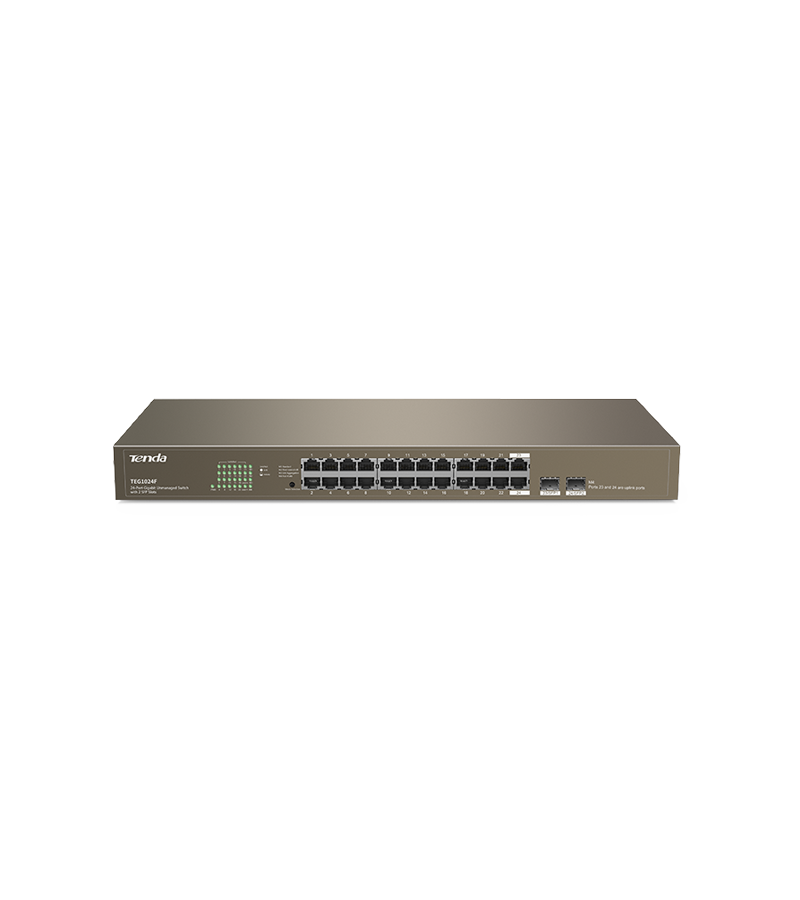
ke
| Network standards | IEEE 802.3, IEEE 802.3u, IEEE 802.3x, IEEE 802.3ab, IEEE 802.3z |
| LED Indicator | 1* Power,24* Link/Act,4*Mode |
| Interfaces | 24*10/100/1000 Base-T Ethernet ports (Auto MDI/MDIX) 2*1000 Base-X SFP ports (Combo) |
| Transmission media | Recommended: CAT5/5e UTP or better |
| Dimensions | 440.0mmx178.0mmx44.0mm |
| Material | Metal |
| Level of protection | Lightning protection for uplink ports: 6KV Lightning protection for power: 6KV ESD: Air discharge: ±10kV Contact discharge: ±8kV |
| Forwarding mode | Store-and-forward |
| Switch capacity | 48Gbps |
| Forwarding rate | 35.60Mpps |
| Buffer | 2Mb |
| MAC address table | 8K |
| Power method | Input: 100-240V AC 50/60Hz |
| Power consumption | Max:<13W |
| Mounting | Desktop mounting: support Wall mounting: support Rack mounting : support |
| Environment | Operating temperature: 0°C - 45℃ Storage temperature: -40°C - 70°C Operating humidity: (10% - 90%) RH, non-condensing Storage humidity: (5% - 90%) RH, non-condensing |
| Certifications | CE, FCC, RoHS |
| Funtions | M1: Standard mode, the default mode of the switch. In that mode, all ports can communicate with each other. M2: Port-based priority mode, ports 1 to 8 have higher priority than other ports, and all ports can co.0mmunicate with each other. M3: Port-based VLAN mode, ports 1 to 24 can co.0mmunicate with uplink ports (ports 25 and 26) but cannot co.0mmunicate with each other. |
| Protocols | CDMA/CD |
| MAC address learning | Auto-Learning and Auto-Aging |
